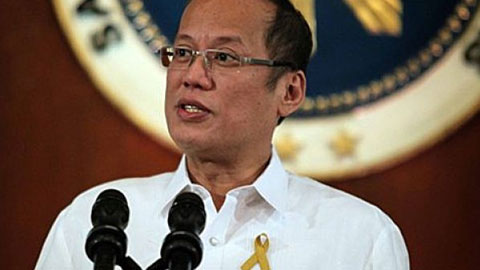
Hopes and expectations for SONA 2015
“Ipinapangako ko, ibababa na natin ang halaga ng babayarang buwis ng bawat manggagawang Pilipino.”
 For Senator Sonny Angara, just one line –such as written above– by the President in his SONA that he will lower personal income tax rates will be his best goodbye gift to the people.
For Senator Sonny Angara, just one line –such as written above– by the President in his SONA that he will lower personal income tax rates will be his best goodbye gift to the people.
“Of the thousands of words in his SONA, one of the most awaited and the one which will be most applauded is President Benigno S. Aquino III saying that he will back bills that will lower individual income taxes,” said Angara, author of a bill compressing the net taxable income brackets, and lowering tax rates especially for low- and middle-income earners.
The senator cited that the Philippines has the second highest individual income tax rate in the region at 32 percent next to Thailand and Vietnam’s 35 percent, and the highest value added tax (VAT) at 12 percent.
Record shows Aquino has signed 179 laws since 2010, including the Sin Tax law, the K-to-12 program, the Reproductive Health Law, the Cymbercrime Law, the Kasambahay Law and the AFP Modernization Act, among others.
However, other crucial measures — the proposed Bangsamoro Basic Law, Freedom of Information Bill and the Anti-Political Dynasty Bill — remain pending as his term winds down.
For Juan dela Cruz or the ordinary Pinoy and citizen of the land, expects the president to report on the accomplishments and results of the promises he made under the “Daang Matuwid” and “Kayo ang Boss ko” administration.
A quick survey through the FaceBook by PSR reveals varied reactions and expectations for the 2015 Sona.
A public school teacher said: “I want to hear more about his plans on education, especially the K to12 program. Sa school namin di pa namin alam kung anong mangyayari sa mga Grade 10 students after. Hindi kasi eligible ang school namin for grades 11 and 12.
I also want to hear his plans regarding the teachers’salary, sana itaas din naman para marami ang magdesire na mag-stay sa pagtuturo, marami nang umalis dahil naliliitan sa sahod. At least sana madagdagan ang population ng mga teachers dahil na-attract sila sa tamang salary.
Ine-expect ko na rin na ma-explain naman niya kung bakit yung sinasabi niyang tuwid na daan parang lalong bumaliko. ..”
While a worker and MRT-commuter said: “ I expect nothing new of the Sona. I expect the same old speech with excessive pride about the achievements of the government under his administration. As an ordinary “Juana dela cruz” I cannot feel whatever the achievement that he is bragging to us. I am very disappointed, I am not happy especially commuting in the MRT. The rail system is a total mess.
But I’m still hopeful… He still have chance to prove that my perception about him as president is wrong. I want to hear what are his plans for the commuting public. We want to see results. MRT is a hell — the elevator, escalator, ticketing system are not working; there are less coaches, always of late arrivals. Hindi kasi sila nag-co-commute kaya walang sense of urgency…”
Meanwhile, a travel operator said: “I want to hear direct answers to important issues like Mamasapano massacre, issues on dispute with china, and the corruption in the government. The answers may be good or bad but we have to know where we stand. There should be no more palamuti in his speech.
Overall, our netizens would like to hear the president’s truthful report and updates on the BBL, the South China Sea disputes, the Private-Public Partnerships (PPP), the country’s real economic growth scenario, the K to12 program, concrete solutions to MRT-LRT woes, the Freedom of Information proposed bill, and the issues on Priority Development Assistance Fund (PDAF) and Disbursement Acceleration Program (DAP) which hound Aquino administration over the year.
TRADITIONS AND HISTORY
The State of the Nation Address (in Filipino: Talumpatì sa Kalagayan ng Bansa), the annual address by the President of the Republic of the Philippines to a joint session of the Congress of the Philippines, has become one highly anticipated speech and event in the life of the Filipinos in many years.
The SONA traces its roots during the Commonwealth period as the 1935 Constitution states in Article VII, Section 5 that “[t]he President shall from time to time give to the Congress information on the state of the Nation, and recommend to its consideration such measures as he shall judge necessary and expedient.”
Since then, the President’s Report has become a yearly tradition. But as mandated by the 1987 Constitution ( Article VII, Section 23), it is delivered every fourth Monday of July at the opening of the regular session of Congress. Since 1987, the Plenary Hall of the House of Representatives Comples (or Batasang Pambasa) in Batasan Hills, Quezon City, Metro Manila, has become the event’s permanent venue.
The address is usually delivered at around the Philippine Standard time at 4:00 pm. Before the appointed time, legislators enter the Plenary Hall, Senators and Congresswomen and their consorts normally sport traditionally-inspired couture that in some cases expresses their legislative agenda or ideological leanings. However, in recent years, the legislators’ entrance has become a show of pomp and pageantry which many sectors of the society see unfit for the legislative occasion.
The Address serves as a means to inform the nation about its present economic, political, and social condition, and is a vehicle for the President to summarize the accomplishments and plans of his/her program for government both for a particular year and until the end of their term of office.
Treated as a national event and given wide coverage, the SONA which can last anywhere from one hour to several, is broadcast on television, radio, and online by both state agencies alongside local and international private media organizations.
On July 27, 2015, the 15th President Benigno S. Aquino III delivers his sixth and valedictory State of the Nation Address.
The address of President Aquino III is the 78th since 1935 and the 30th since the restoration of democratic rule under the Fifth Republic in 1987.



